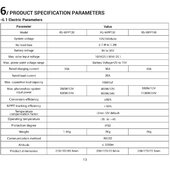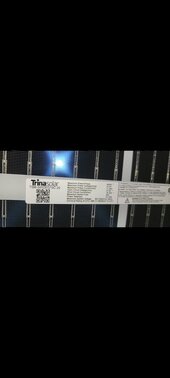Dadoftheturkeykids
New Member
I know this has been discussed many times here, and reading into it I think the general conclusion is;
Overpanel as much as you want, just don't go above the voltage limits of your charge controller.
Is this true? What if I doubled the input but stayed under voltage?
I want to know if I can put two 545w panels in series on my 40amp solar charge controller charging a 12v battery bank.
(I am aware of the losses, and aware that if I were to have a 24v bank, it would fit the
CC parameters perfectly)
This would be temporary until I can afford to buy 4 more controllers (i have 4 currently)
or a suitable 24v inverter. As of right now I only have a 12v inverter, but have 8 of these panels I want to utilize/mount now.
SCC- RichSolar 40a mppt (100v max)
Panels- Trina 545w (37.9 VOC)
If I series 2 panels together that would give me 75.8voc @ 17.24a, which is way more than my controller can feed to my battery bank, but will it have any negative impact on my controller?
Overpanel as much as you want, just don't go above the voltage limits of your charge controller.
Is this true? What if I doubled the input but stayed under voltage?
I want to know if I can put two 545w panels in series on my 40amp solar charge controller charging a 12v battery bank.
(I am aware of the losses, and aware that if I were to have a 24v bank, it would fit the
CC parameters perfectly)
This would be temporary until I can afford to buy 4 more controllers (i have 4 currently)
or a suitable 24v inverter. As of right now I only have a 12v inverter, but have 8 of these panels I want to utilize/mount now.
SCC- RichSolar 40a mppt (100v max)
Panels- Trina 545w (37.9 VOC)
If I series 2 panels together that would give me 75.8voc @ 17.24a, which is way more than my controller can feed to my battery bank, but will it have any negative impact on my controller?





